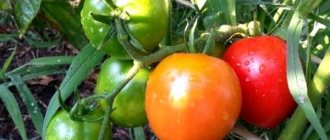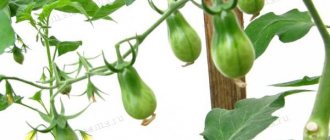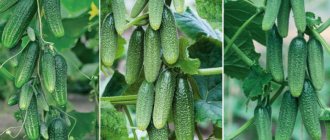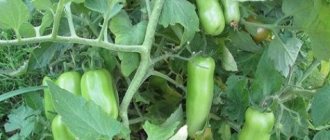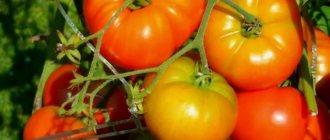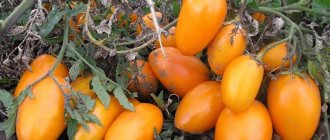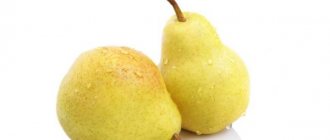If late blight has become a permanent resident in your tomato garden, think about growing resistant varieties. They certainly help to minimize losses from the insidious late blight on the site. The list I presented contains tomato varieties for protected and open ground. Many of the resistant varieties are inferior in yield even when grown in film greenhouses. From 20 varieties of tomatoes, I made a selection according to ripening time, yellow-fruited, low-growing and fleshy varieties and hybrids. Share your experience of growing resistant varieties and ask any questions - I’m always happy to answer.
Features of tomatoes resistant to late blight
To prevent planted vegetables from getting sick, it is recommended to plant blight-resistant varieties that have strong immunity. The characteristics and descriptions of such tomatoes will allow you to understand their main features.
It is worth noting that there are no plants that are 100% likely not to become infected with late blight. So far, breeders have managed to develop tomato varieties that are better protected from this pathology than others. However, there is still a small chance of infection with a fungus.
Many experienced gardeners claim that the most resistant are determinate, low-growing tomatoes with early harvest ripening.
Their main features include the following:
- the bushes have few side stems, which is why they are better ventilated;
- high productivity;
- long fruiting;
- slow growth after the appearance of the third ovary.
There are also indeterminate tomatoes that rarely suffer from fungal pathologies, but there are much fewer of them.
Bacterial diseases
Some bacteria are also dangerous for tomatoes. Their pathogenic effects resemble fungi. In the first stages, the disease is difficult to identify, which complicates the treatment process.
Bacterial cancer
Clavibacter michiganesis is the causative agent of bacterial cancer. The leaves of the affected plant begin to dry out, ulcers appear on the shoots, the vessels change color, mucus appears instead of juice, and ulcers form on the fruits. Favorable conditions – high humidity.
Plants can get sick at any stage of development. In some cases, planting material is infected. All that can be done to prevent the disease is to carry out pre-sowing treatment and choose resistant varieties and hybrids for planting.
Bacterial wilt (southern sclerotial wilt)
Burkholderia solanacerum develops mainly in the southern regions of the country
. This is favored by high temperatures up to +30 degrees above 0, humidity and soil composition. In addition to tomatoes, the bacterium is dangerous for another 200 types of plant crops.
The damage is directed to the root system, as a result of which the leaves begin to wilt. Chlorosis is not typical for this type of wilt.
Signs: appearance of mucus, change in color of the vascular system, appearance of voids in the stems. Infected plantings are destroyed, and the soil is treated with a solution of potassium permanganate for disinfection.
Tomato core necrosis
Pseudomonas corrugate – a bacterium that causes pith necrosis
. Conditions such as high air humidity, temperature changes, and increased nitrogen content in the soil are favorable for its spread. Develops faster in greenhouse conditions. Of all infected plants, about a third recover, since there are no means of treatment.
The damage begins from the roots, which leads to yellowness in the upper part of the bushes. Tomato stems become covered with black ulcers. As a result of blockage of blood vessels, bacterial rot is formed.
Bacterial leaf spot of tomatoes
Pseudomonas syringae is not too dangerous. It can be identified by brown spots on the foliage. Cold weather, high humidity, and sudden temperature changes are the most favorable conditions. The bacterium penetrates inside through microcracks in the roots and damage resulting from pinching. To eliminate bacterial spot disease in tomatoes, they are treated with copper sulfate.
Bacterial spotting of tomato fruits
Pseudomonas syringae affects all parts of plants: petioles, leaves, fruits. It is especially dangerous during the summer cold snap, as well as during sudden temperature changes.
Watering with too cold water can cause illness.
After infection, the first symptoms appear the next day
. In the early stages, Bordeaux mixture and copper sulfate can stop the course of the disease. And it is best to treat healthy plantings with them so that they do not get sick.
Bacterial spot
Symptoms of Xanthomonas vesicatoria can be seen on all parts of the plant. Watery spots appear on the foliage. After growth, the affected areas dry out and crack. Black cones with a white border appear on the tomatoes, with a depression in the center. Favorable time for the spread of bacterial spot on tomatoes: July - August.
Advice!
Proper watering is the basis for preventing this disease. At the initial stage of the disease, treatment with copper sulfate is effective.
